Published Jul 5, 2021
The Fleet's In: 24th Century Federation Starships
Does your favorite ship make the cut?
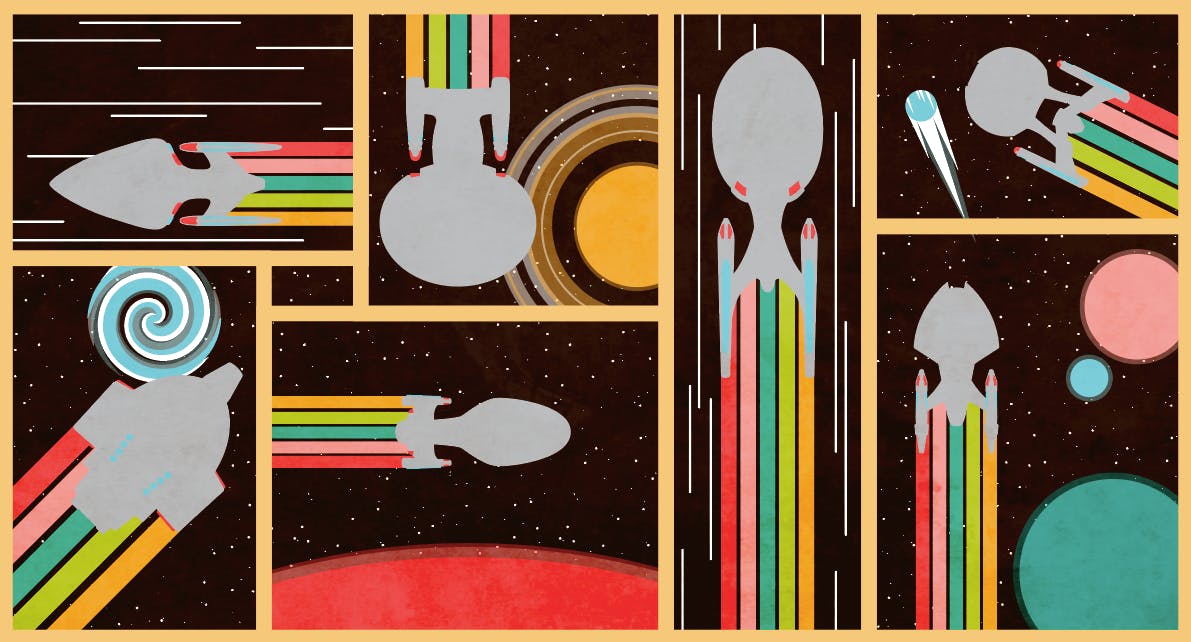
StarTrek.com
For those of us who lovingly refer to ourselves as “starship nerds,” Star Trek's 24th century is populated with an astounding array of Starfleet vessels for us to gaze upon with awe. The series and films set in this era, namely Star Trek: The Next Generation, Star Trek: Deep Space Nine, Star Trek: Voyager, Star Trek: Picard, and the four movies helmed by the TNG crew, produced vast fleets that demonstrated the Federation's prestigious shipbuilding capabilities.
Narrowing down choices, and ranking my favorites proved difficult enough, so we have excluded 23rd century holdovers (so no Excelsior-, Miranda-, Constellation-, and Oberth-class staples), non-Starfleet vessels such as Ambassador Spock's craft from Star Trek (2009), the relatively diminutive Danube-class runabouts, and auxiliary shuttles. With that in mind, let's take a look at the ships that have been deployed from Utopia Planitia, Riverside, Beta Antares, Eridani A, and other Federation fleet yards.
10. Nova-class in Voyager
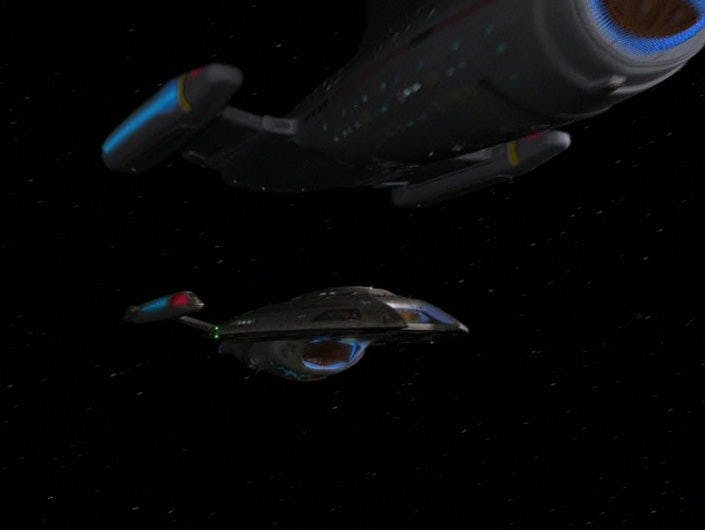
StarTrek.com
When the Nova-class U.S.S. Equinox first popped up on U.S.S. Voyager's sensors in “Equinox,” Captain Janeway noted that the starship was a planetary research vessel designed for scientific missions rather than long-range tactical excursions. The Nova-class bore streamlined similarities to its larger Intrepid and Sovereign-class cousins, but its limited scope and small crew left it vulnerable to a lonely jaunt through the Delta Quadrant. If Captain Ransom had commanded a sturdier vessel, perhaps he would not have resorted to the deplorable tactics he employed to find a faster route home. However, the design apparently stood an excellent chance of enduring, as Captain Harry Kim sat in the center seat aboard the Nova-class variant U.S.S. Rhode Island in the alternate future seen in “Endgame.”
9. Ambassador-class in The Next Generation and Deep Space Nine

StarTrek.com
The U.S.S. Enterprise-C remains the most well known Ambassador-class vessel due to its namesake, its prominence in the classic “Yesterday's Enterprise,” and its valiant rescue of the Klingon outpost on Narendra III from Romulan aggressors. Variants of this starship also notably appeared in Captain Picard's blockade during the Klingon Civil War, at the Battle of Wolf 359, and as a transport in “Data's Day.” The explorer's design proved to be an elegant mid-point between its Excelsior-class predecessors and Galaxy-class successors, and it would have been wonderful to see the vessel show up on a more frequent basis.
8. Prometheus-class in Voyager
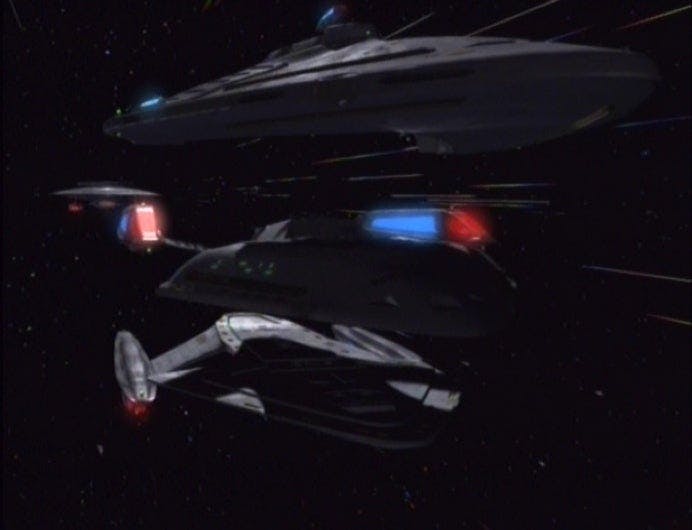
StarTrek.com
Who can forget the stunning sight of the prototype U.S.S. Prometheus becoming three independent vessels as it separated into multi-vector assault mode during “Message in a Bottle?” The Prometheus's computer and resident EMH informed Voyager's doctor that the advanced ship was intended for deep space tactical assignments and could achieve speeds faster than any other member of the fleet. The pair of holographic physicians managed to wrest control of the Prometheus from Romulan hands and deploy its experimental defensive systems against Tal Shiar warbirds. While it is unknown if further Prometheus-class ships were constructed, the prototype was spotted again as part of the armada sent to intercept the Borg sphere in “Endgame.”
Star Trek Ships of the Line — U.S.S. Prometheus
7. Akira-class in Star Trek: First Contact, Deep Space Nine, and Voyager
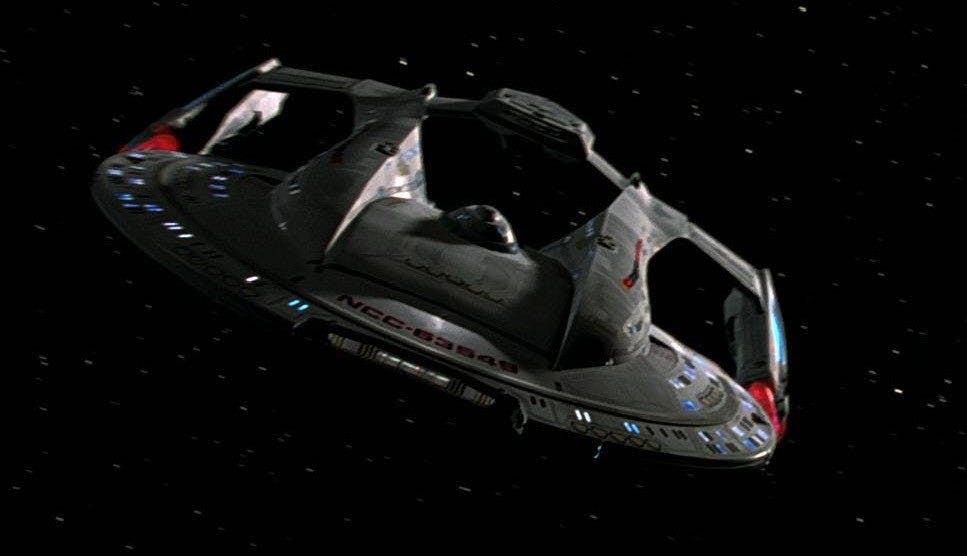
StarTrek.com
First seen on screen in the Battle of Sector 001, the Akira-class's earliest chronological appearance occurred during a flashback at the Utopia Planitia shipyards in the Voyager episode “Relativity.” While no single starship of this design ever received an excessive amount of attention, numerous Akira-class vessels substantiated their worth in battle during the height of the Dominion War. From retaking Deep Space 9 in “Sacrifice of Angels” to assaulting Cardassia in “What You Leave Behind,” these resilient craft evidently became an instrumental element in Starfleet's defense forces by the end of the 2370s.
6. Inquiry-class in Picard
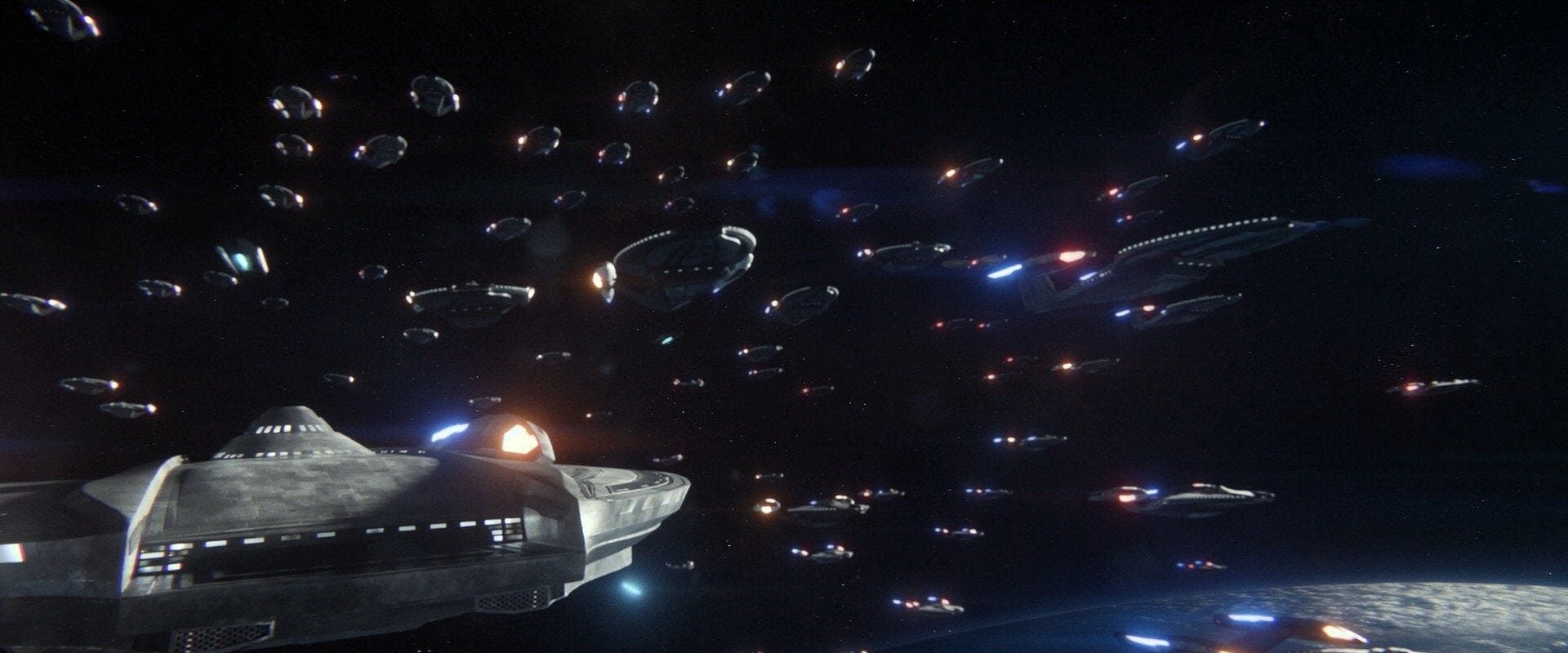
StarTrek.com
The imposing task force led by Captain Riker above Coppelius was composed of Inquiry-class vessels, including Riker's own U.S.S. Zheng He. Representing the most up-to-date Federation design of the 24th century, the reinstated captain described these ships as the toughest, fastest, and most powerful ones that Starfleet had ever produced up until that time. Although the entire fleet that confronted the Romulans in the Ghulion system fell into the Inquiry-class designation, there seemed to be two variants with differing nacelle configurations present. A whole armada of vessels more advanced than either the Galaxy- or Sovereign-classes? Now that is a majestic view to behold. I'd love to see a rundown of the entire roster of over 150 ships (by my latest count) that participated in Riker's defense formation.
5. Nebula-class in The Next Generation, Deep Space Nine, Voyager, Star Trek Generations, and Star Trek: First Contact
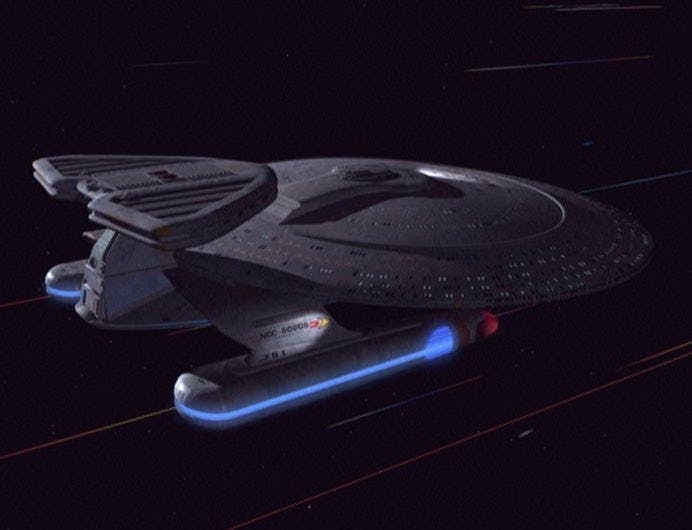
StarTrek.com
With primary hulls resembling those of its Galaxy-class counterparts, the Nebula-class explorers were featured heavily across multiple series and movies. Captain Maxwell demonstrated their tactical prowess as the U.S.S. Phoenix overwhelmed Cardassian targets in “The Wounded,” Data assumed temporary command over the U.S.S. Sutherland in “Redemption II,” the U.S.S. Farragut aided the U.S.S. Enterprise-D's crew on Veridian III, and Professor Seyetik's U.S.S. Prometheus conducted solar experiments in “Second Sight.” The Nebula-class's diverse mission profile and extensive use over the years helped it secure such a high rank on our list.
4. Sovereign-class in Star Trek: First Contact, Star Trek: Insurrection, and Star Trek Nemesis
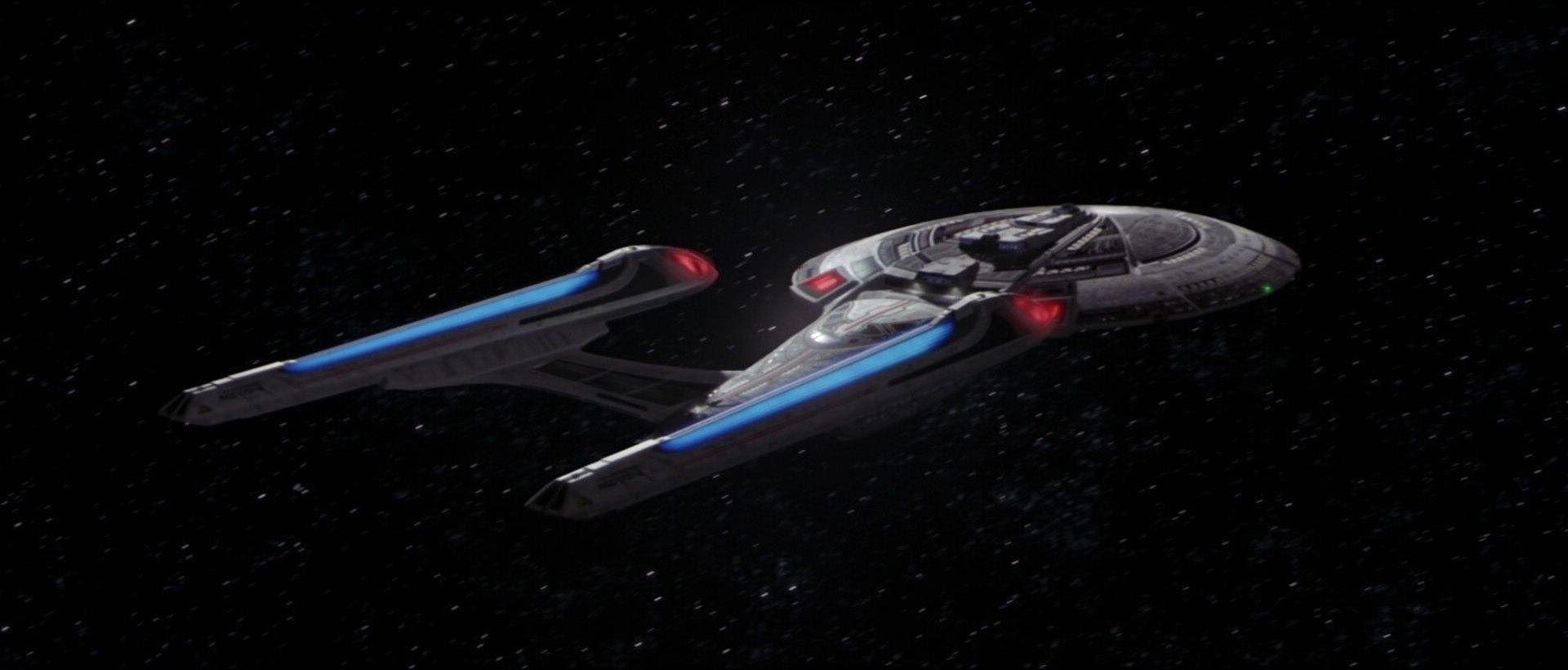
StarTrek.com
With its on screen credits confined to the U.S.S. Enterprise-E's roles in the final three TNG films, the beautifully-fashioned Sovereign-class is often considered to be an underutilized design by starship aficionados. However, given the class's appearances on background LCARS graphics in DS9, I would love to imagine that many Sovereigns were built and saw service somewhere just off-camera during those epic Dominion War battles. Geordi La Forge considered the Enterprise-E to be Starfleet's most advanced ship in 2373, and the new Federation flagship lived up to its reputation in engagements with the Borg, Son'a, and Praetor Shinzon's Scimitar. While not as voluminous as the Enterprise-D, Picard's latest command maintained a larger-than-life presence as it warped across the quadrant to extinguish diplomatic and strategic brush fires.
3. Defiant-class in Deep Space Nine, Star Trek: First Contact, and Voyager
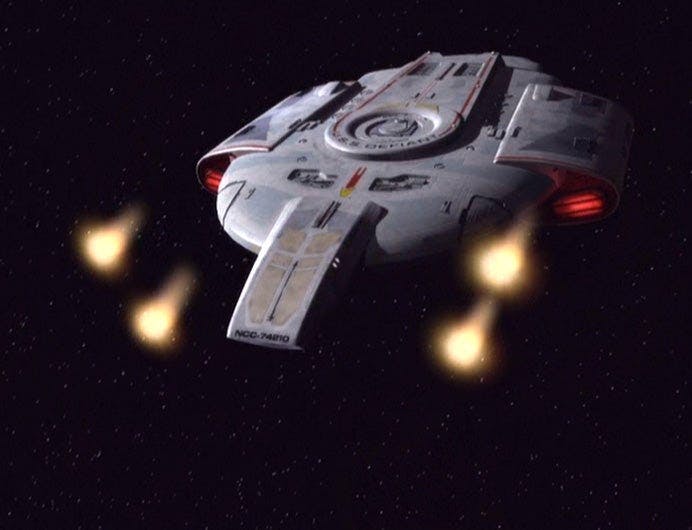
StarTrek.com
Riker's legendary quip about a “tough little ship” perfectly encapsulates the Defiant-class's ability to contain such overpowered weapons and defensive shields within such a small spaceframe. Originally developed to combat the Borg (which the U.S.S. Defiant bravely did under Worf's leadership at the Battle of Sector 001), Captain Sisko's beloved flagship ultimately earned its fiercest accolades in clashes against the Jem'Hadar both before and during the Dominion War. The only member of Starfleet to be (unofficially) considered a warship and (legally) equipped with a cloaking device, the Defiant withstood everything that was thrown at it... until a Breen energy-dampening weapon brought about its untimely end. The U.S.S. São Paulo, fittingly renamed in honor of its sister ship Defiant, allowed Sisko to oversee the Dominion's final defeat at Cardassia from a familiar bridge.
2. Intrepid-class in Voyager and Deep Space Nine
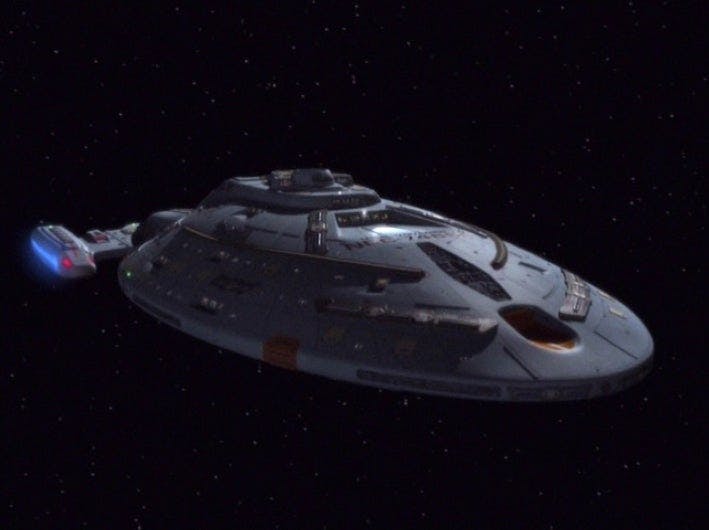
StarTrek.com
Home to Captain Janeway and her crew for their entire venture through the Delta Quadrant, U.S.S. Voyager pioneered Starfleet's use of bio-neural circuitry, the Emergency Medical Hologram, and a warp core that managed a top cruising speed of warp 9.975. Of course, Voyager also reaped the unique benefit of Seven of Nine's Borg database, a valuable library that permitted them to add a finely-tuned astrometrics lab and the Delta Flyer to the ship's already impressive complement. Voyager's capacity to outlast everyone from the Hirogen to the Devore in a firefight while still completing countless scientific surveys and first contact missions served as a testament to its durability. When Admiral Ross visited Romulus during the height of the Dominion War, even the high-ranking officer opted to travel on the Intrepid-class U.S.S. Bellerophon rather than any other craft.
1. Galaxy-class in The Next Generation, Deep Space Nine, Voyager, Picard, and Star Trek Generations
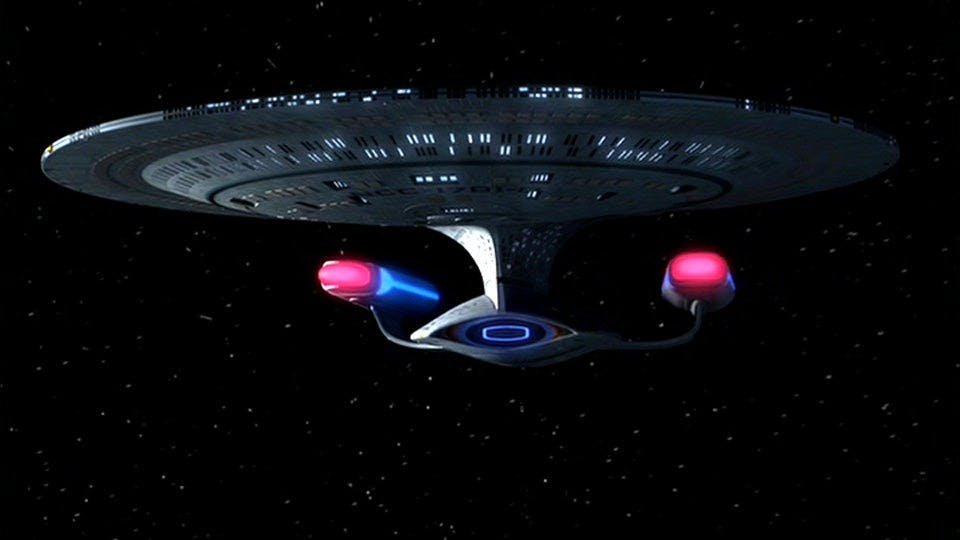
StarTrek.com
In what is sure to become a controversial decision, the Galaxy-class explorer tops our list of incredible Federation vessels. Despite early concerns over potential design flaws, the Enterprise-D and its sister ships acquitted themselves admirably from TNG's opening moments through Voyager's return to Earth. Whether hosting dignitaries or being transported to regions beyond the Milky Way's confines, the Enterprise-D acted as a home and refuge for its crew and their families. Although the U.S.S. Odyssey fell in the Federation's first skirmish with the Jem'Hadar, other Galaxy-class starships held the line against the Dominion throughout the war. In the alternate version of 2390 depicted in “Timeless,” the U.S.S. Challenger remained in service under Captain Geordi La Forge. If the Galaxy-class is good enough for Starfleet's most accomplished 24th-century engineer, who am I to disagree?
Star Trek Ships of the Line — U.S.S. Enterprise
Jay Stobie (he/him) is a freelance writer who contributes articles to the official Star Trek website and Star Trek Magazine, as well as to Star Wars Insider and the official Star Wars website. Jay also serves as a part-time assistant and consultant advising many actors and creatives who work on his favorite sci-fi shows and films. He can be found on Twitter and Instagram at @StobiesGalaxy.
Star Trek: Picard streams on Paramount+ in the United States, n Canada on Bell Media’s CTV Sci-Fi Channel and streams on Crave, and on Amazon Prime Video in more than 200 countries and territories.
